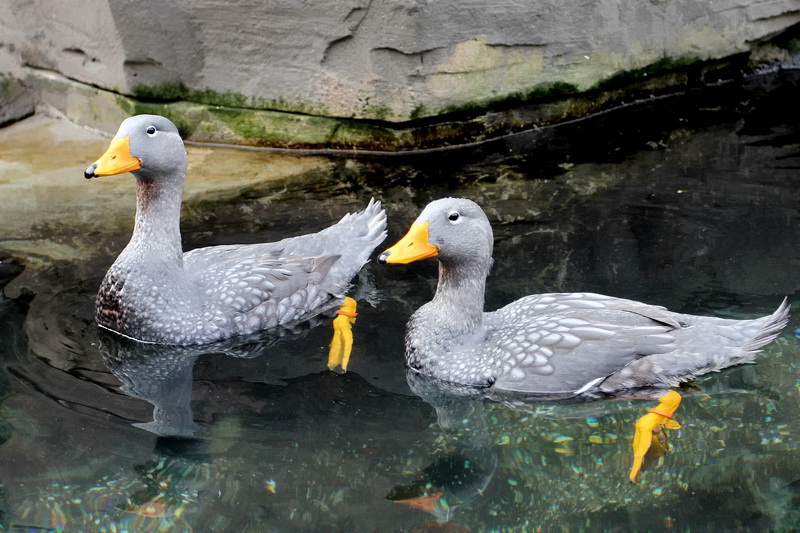
Fuegian steamerduck, or Magellanic flightless steamer duck(Tachyeres pteneres)
Phylum —chordata
Class — aves
Order — anseriformes
Family — anatidae
Genus –tachyeres
Appearance
This is the largest of the steamer duck species. It is a massively built waterfowl at 3.5–7 kg (7.7–15.4 lb) and 65–84 cm (26–33 in) in length, with the males noticeably larger than the females. The wingspan is 85–110 cm (33–43 in), the wings being too small to functionally allow the birds to take flight. Instead, the wings are used like paddles to help skim rapidly across the surface of the water. This species outweighs any other wild species called "duck" and is about the same mass as the largest wild geese in the world.
On males, the head and neck is blue-gray, with paler coloration crown and forehead. He has a narrow white eye-ring which continuing backwards as stripe and a reddish-brown throat. His abdomen, ventral area and undertail coverts are white and the tail is grey. Females are a darker gray-brown on the head and dark reddish on the throat. Her body and wings as males, but she may have brown/wine coloring on feathers. The juvenile is similar to the female but slightly duller colored.
Habitat
It inhabits the rocky coasts and coastal islands from southern Chile and Chiloé to Tierra del Fuego, switching to the adjacent sheltered bays and lakes further inland when breeding.
Diet
This species lives principally off of saltwater mollusks, crustaceans and small fish. During the breeding season, they tend to eat and feed their young small snails, insect larvae, amphipods and isopods.
Reproduction
This species either nests near water obscured in dense, shrubby vegetation or in abandoned penguin nest burrows in September through December. Between 4 and 11 eggs are laid, with an average clutch of 9. Incubation occurs for 28 to 40 days. The young fledge at 120–130 days and are driven from the parent's territory by their parents and form flocks with other ousted immature steamer ducks. They become sexually mature at 2 to 3 years of age. Adult males are known to be extremely aggressive during mating season, including towards other waterfowl, but may join mixed-species winter flocks without incident.
Incaptivity
Longevity in captivity – 20 years.
In captivity, you can feed ducks with hard varieties of barley and buckwheat, fresh fish, small crustaceans, and bloodworms. The feed should be crushed, but not too finely.
Birds should eat together with their food small pebbles and clean river sand. It is also important that ducks have round-the-clock access to clean drinking water. Ducklings eat the same things as chickens — grass, boiled egg, vitamin supplements.
The owner should take care of regular cleaning in the duckling house. This will help to avoid the spread of various diseases. Since wild ducks have a strong immune system, their vaccination is carried out only on farms with low disease rates.
It is important for the bird to have an opportunity to walk freely on the territory of the poultry house — for wild ducks, walking and the availability of natural or artificial reservoirs are mandatory. The paddock should be equipped with a canopy that will help protect the birds from rain and sun.
It is necessary to take care of protecting the herd from severe frosts and provide for the possibility of warming the room. To avoid various infections, the poultry house should be ventilated daily. The room should be clean and dry. The poultry house itself should be quite spacious — the ideal density of heads is no more than three per square meter. In the warm season, waterfowl feel comfortable in the fresh air, where they can stay all day long.
In cold weather, the owners should organize lighting (daylight hours to preserve egg production should last at least 14 hours) and insulate the floors with a thick layer of straw bedding.























